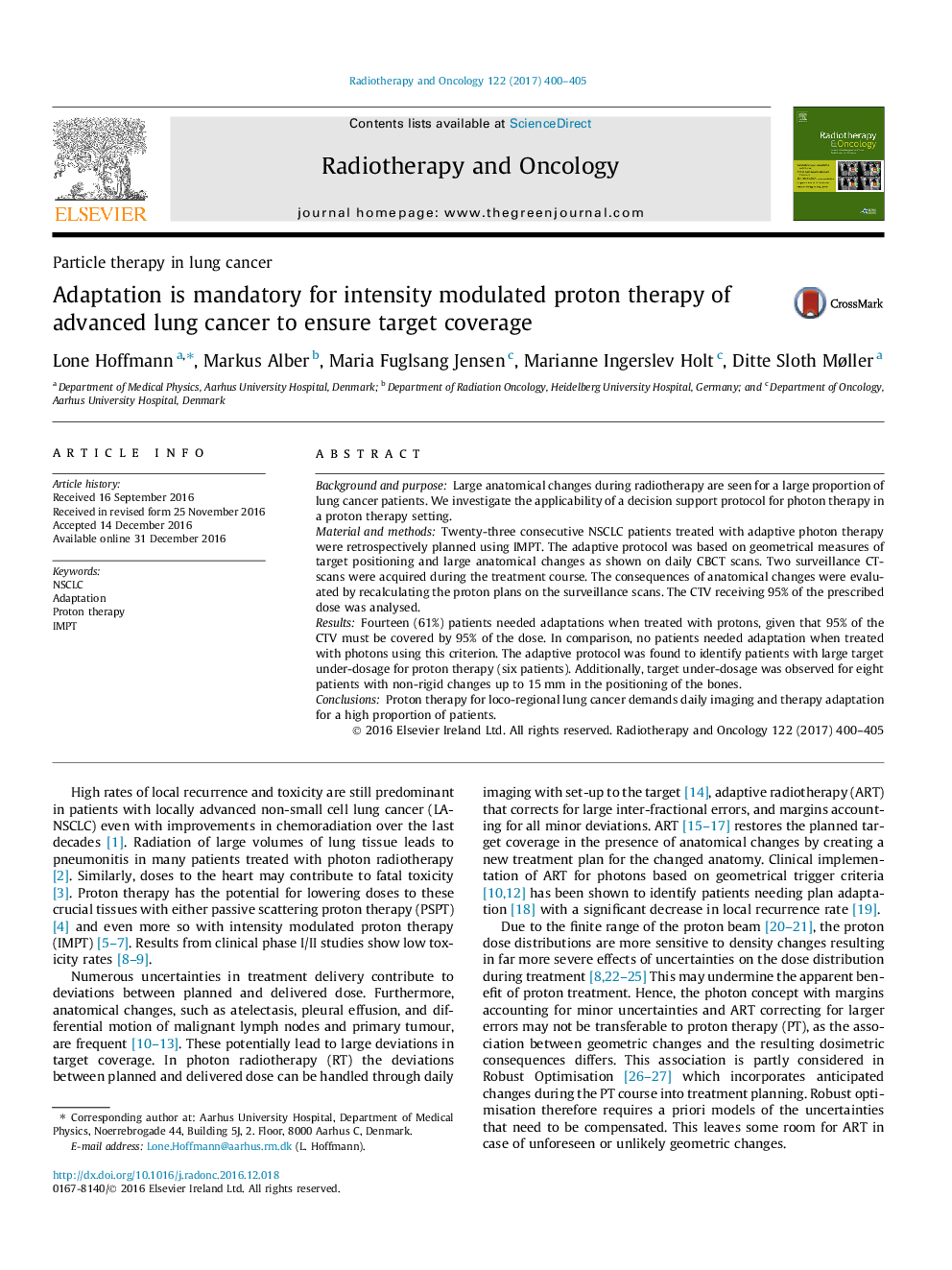| Article ID | Journal | Published Year | Pages | File Type |
|---|---|---|---|---|
| 5529567 | Radiotherapy and Oncology | 2017 | 6 Pages |
Background and purposeLarge anatomical changes during radiotherapy are seen for a large proportion of lung cancer patients. We investigate the applicability of a decision support protocol for photon therapy in a proton therapy setting.Material and methodsTwenty-three consecutive NSCLC patients treated with adaptive photon therapy were retrospectively planned using IMPT. The adaptive protocol was based on geometrical measures of target positioning and large anatomical changes as shown on daily CBCT scans. Two surveillance CT-scans were acquired during the treatment course. The consequences of anatomical changes were evaluated by recalculating the proton plans on the surveillance scans. The CTV receiving 95% of the prescribed dose was analysed.ResultsFourteen (61%) patients needed adaptations when treated with protons, given that 95% of the CTV must be covered by 95% of the dose. In comparison, no patients needed adaptation when treated with photons using this criterion. The adaptive protocol was found to identify patients with large target under-dosage for proton therapy (six patients). Additionally, target under-dosage was observed for eight patients with non-rigid changes up to 15Â mm in the positioning of the bones.ConclusionsProton therapy for loco-regional lung cancer demands daily imaging and therapy adaptation for a high proportion of patients.
